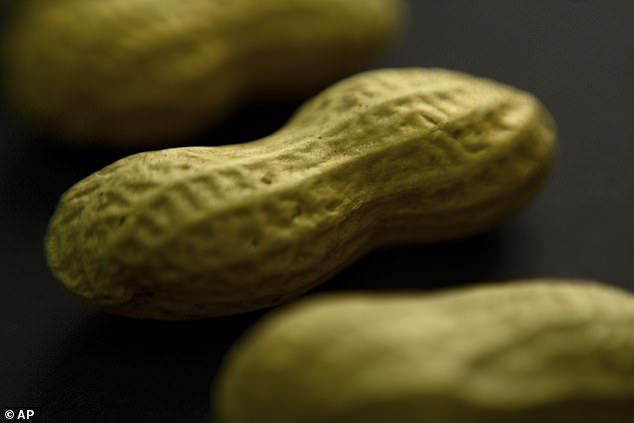Table of Contents
- Omalizumab has been shown to improve participants’ responses to allergens.
- New England Journal of Medicine study could be a breakthrough
- The FDA has approved the use of the drug to reduce allergic reactions.
<!–
<!–
<!– <!–
<!–
<!–
<!–
A breakthrough could have been made in protecting against severe allergies after a study found that an asthma medication increases tolerance to allergens.
The study by The New England Journal of Medicine found that Omalizumab reduced the frequency of severe reactions in participants with multiple food allergies, mostly children between 1 and 17 years old.
After a four-month treatment with the drug, two-thirds of participants were able to consume a dose of peanut protein equivalent to two or three peanuts, compared to only seven percent of participants who took a placebo.
So now that the US Food and Drug Administration (FDA) has approved the use of omalizumab to reduce allergic reactions in February 2024, how does the drug work?
Continue reading to learn more about omalizumab and how food allergies can be treated.

Omalizumab, commonly known as Xolair, has been shown to improve participants’ responses to food allergens, including peanuts, in a New England Journal of Medicine study.


The study was primarily conducted on children with multiple food allergies and also had similar positive results around reactions to milk and eggs (file image).
What is omalizumab?
Omalizumab, sold under the brand name Xolair, was first approved by the FDA in 2003 as an asthma treatment aimed at improving moderate and severe asthma.
It has since been approved in both Europe and America as a treatment for hives and nasal polyps (inflamed lining of the nose and sinuses).
The medication is given as an injection every two to four weeks and targets a specific antibody called IgE.
IgE, like other human antibodies, is produced when the immune system perceives a certain protein as a threat, but when someone is allergic to a protein, the antibody can cause unnecessary inflammation, leading to the reactions we see externally. .
By targeting the antibody, omalizumab may protect against unnecessary inflammation and anaphylactic shock.


Omalizumab is given as an injection every two to four weeks and targets a specific antibody called IgE (file image)
Can omalizumab cure food allergies?
While the results from the New England Journal of Medicine were very promising, there is no suggestion that Xolair can be implemented as a general cure.
While no adverse side effects were found, a third of those taking the drug still suffered severe reactions to the peanut protein levels in the test, and similar results were seen with other allergens such as milk, eggs and some other fruits. dry.
The results only go so far as to show that omalizumab raises the threshold of a food allergen that can be tolerated by someone allergic to it, rather than curing the allergy completely.
As a result, those taking the medication will be instructed to be careful to avoid foods to which they are allergic.
The study’s lead author, Robert Wood, said the “biggest concern” would be that people “assume that their protection against food reactions is fairly complete.”
It is also not approved for the treatment of allergic reactions once they have occurred.
How are food allergies treated?
Prior to the approval of Xolair to combat food allergies in the United States, the only recognized treatment for food allergies was oral immunotherapy (OIT).
OIT involves the allergic person eating increasing amounts of the food they are allergic to every day until they can tolerate a regular dose.
The FDA also approved a specific treatment for peanut allergies in 2020, called Palforzia.
Palforzia is a peanut protein powder that replicates OIT by allowing those who take it to build resilience over time, but it is only available for children four years and older.
In contrast, the omalizumab study reported positive results in children as young as one year old.

